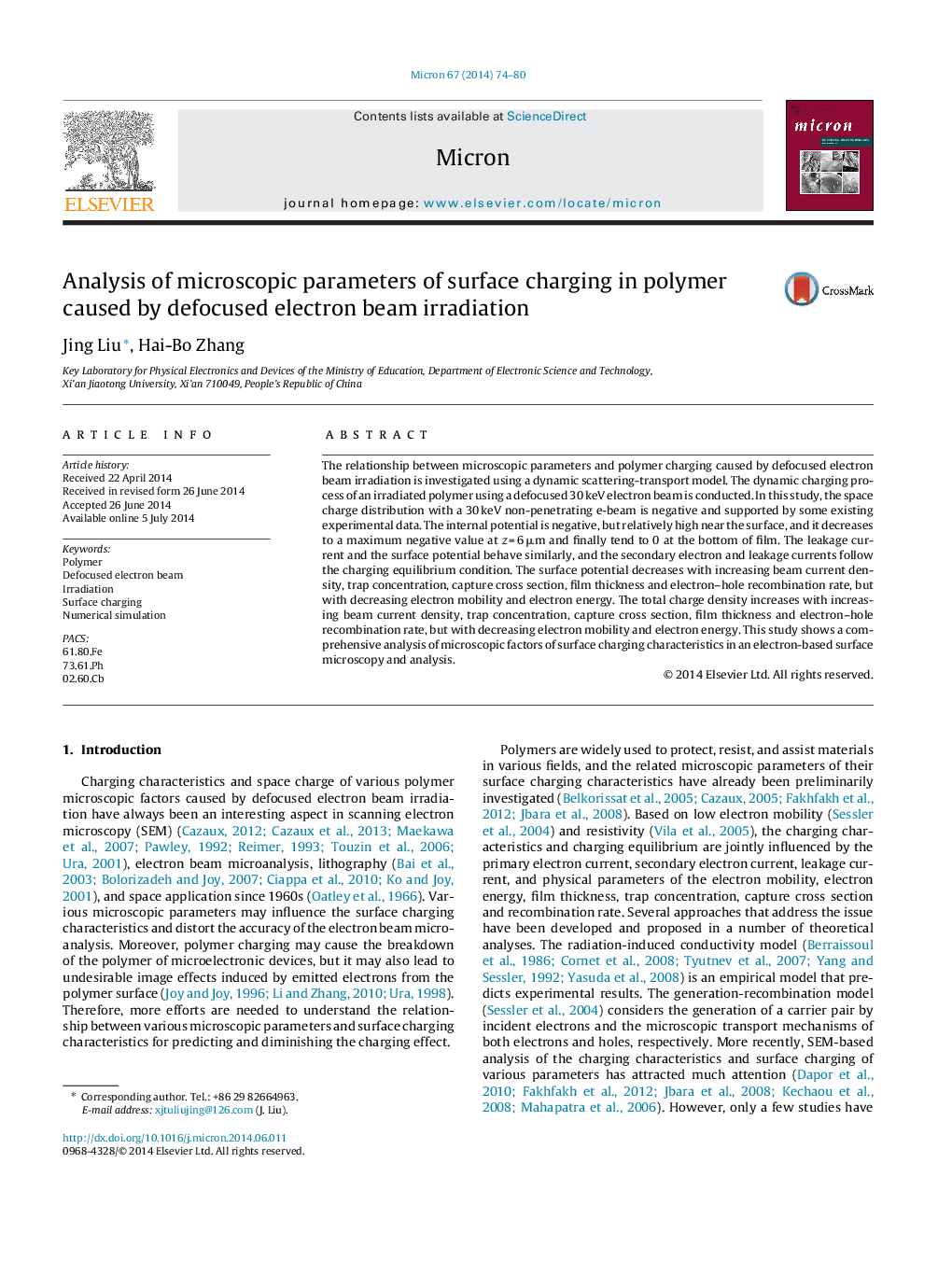| Article ID | Journal | Published Year | Pages | File Type |
|---|---|---|---|---|
| 1588841 | Micron | 2014 | 7 Pages |
•Comprehensive analysis of microscopic factors of surface charging characteristics.•Trapping process is achieved by the trap concentration and capture cross section.•The surface charging characteristics is explained by total charge density and surface potential.•Charging process is described by a simultaneous consideration of electron scattering and transporting.
The relationship between microscopic parameters and polymer charging caused by defocused electron beam irradiation is investigated using a dynamic scattering-transport model. The dynamic charging process of an irradiated polymer using a defocused 30 keV electron beam is conducted. In this study, the space charge distribution with a 30 keV non-penetrating e-beam is negative and supported by some existing experimental data. The internal potential is negative, but relatively high near the surface, and it decreases to a maximum negative value at z = 6 μm and finally tend to 0 at the bottom of film. The leakage current and the surface potential behave similarly, and the secondary electron and leakage currents follow the charging equilibrium condition. The surface potential decreases with increasing beam current density, trap concentration, capture cross section, film thickness and electron–hole recombination rate, but with decreasing electron mobility and electron energy. The total charge density increases with increasing beam current density, trap concentration, capture cross section, film thickness and electron–hole recombination rate, but with decreasing electron mobility and electron energy. This study shows a comprehensive analysis of microscopic factors of surface charging characteristics in an electron-based surface microscopy and analysis.
